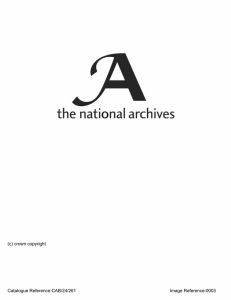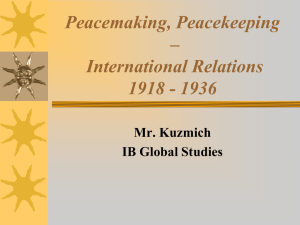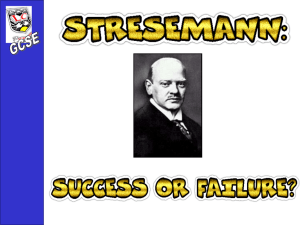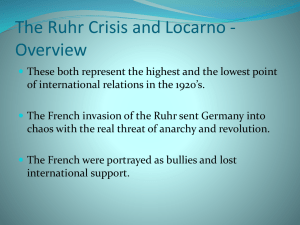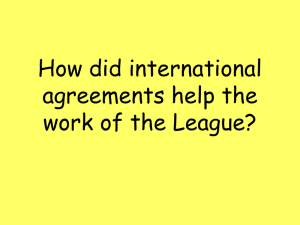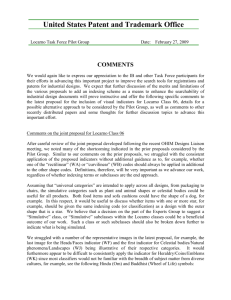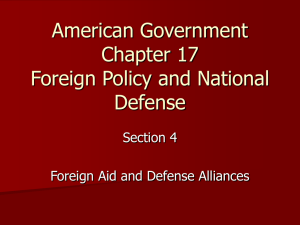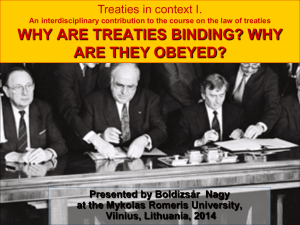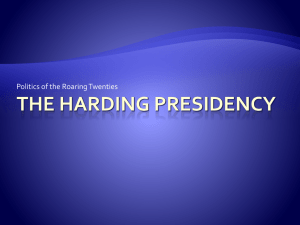The Locarno Era
advertisement
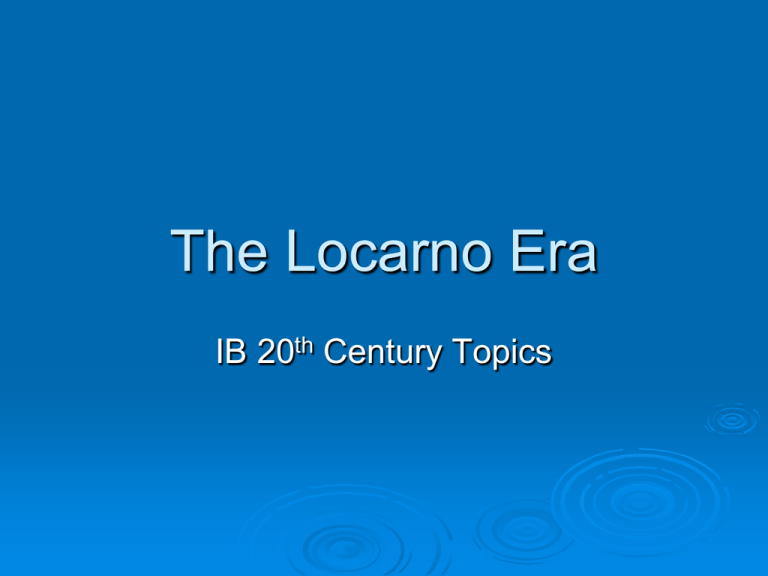
The Locarno Era IB 20th Century Topics Before the Locarno Era After the Paris Peace Conference of 1919, the world witnessed all sorts of strife and even hatred among the countries of Europe… ESPECIALLY WHEN TALKING ABOUT GERMANY The Tides Turn In 1924 and 1925, there was a new spirit of friendship and international cooperation This new era was called many names including: Locarno Era Locarno Spring Locarno Spirit The Locarno Treaties of 1925 sparked this era of European Diplomacy Locarno Treaties October 1925: International conference to discuss the Locarno Treaties: 12 Days of negotiation and delegates agreed on 5 Treaties Western Pact Demilitarization of the Rhineland Nonaggression Pacts Arbitrations Treaties Mutual Assistance Treaties The Western Pact Signed between Germany, France, Britain, Belgium, and Italy Guaranteed the borders between Germany and France and between Germany and Belgium Demilitarization of the Rhineland Germany would have to demilitarize the Rhineland (this was a sacrifice for Germany) The Nonaggression Pact Between Germany and France and Germany and Belgium Delegates from France, Germany and Belgium pledge not to invade or resort to war against each other except under certain specified conditions They pledge to settle their mutual disputes peacefully rather than by force Arbitration Treaties Signed between Germany, Poland, and Czechoslovakia Germany agrees to not use force in settling disagreements with these countries. Instead, she would submit any disagreements to an international arbitration agency Mutual Assistance Treaties France signed treaties of mutual assistance with Poland and Czechoslovakia in case Germany broke the arbitration treaties Gustav Stresemann He is the rep for the Locarno Era German Statesman He had loads of common sense and was a humanitarian… he made moral decisions He was in charge of Germany’s foreign policy from 1923 til 1929. Aristide Briand Another important figure of the Locarno Era French Foreign Minister “It is understandable to be continually casting doubts on Germany’s goodwill… Stresemann and I talked a new language, a language of Europe” Treaties Signed During the Locarno Era These treaties signed during the Locarno Era reflected the idealism of the time. Treaty of Berlin 1926 Admission of Germany into the League of Nations in 1926 Kellogg-Briand Pact of 1928 The Young Plan for reparations, adopted in 1929 The Evacuation of the Rhineland Treaty of Berlin, 1926 Signed between Russia and Germany Reflected Stresemann’s hopes for peace in both the east and the west Treaty provided that Russia and Germany would be neutral It also decided that neither country would ever wage an economic boycott against the other (never restrict trade) Admission of Germany into the League of Nations In September 1926 Germany was granted full membership It was thought that the League couldn’t be legit if it wouldn’t allow members in Kellogg-Briand Pact, 1928 August, 1928 The Pact outlawed war as a policy It is one of the shortest policies on record Signers: Germany, France, Britain, Belgium Czechoslovakia, Italy, Poland, Japan and the US The great powers apparently meant only to ban wars of aggression and reserved to themselves the right to determine whether their actions were offensive or defensive There was no procedure for enforcing the pact The Young Plan Relates to reparations The Important features of the Young Plan: Total amount of reparations for Germany was reduced dramatically to $26 Billion paid over 58.5 years Payments were to be adjusted based on the economic conditions of Germany (Ie: payments were suspended during the Great Depression) Evacuation of the Rhineland In a conference in August of 1929, the Allied Powers agreed to pull their army completely out of the Rhineland by June of 1930 The End of the Locarno Era Ended in 1929 Gustav Stresemann died and with his death the Locarno Era symbolically ended A few days after his death, the Stock Market Crashed in NYC and led to the Great Depression

